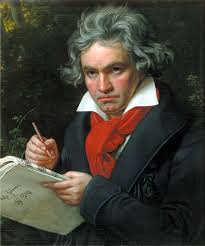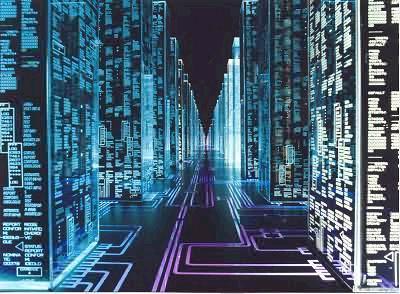Advances through time with the help of computers in different fields
Created in order to publicize technological advances through time that in one way or another have contributed to the social and economic growth of countries.
Medicine is a science that heals and prevents diseases, as well as worries about maintaining the health of the organism.
During the course of the nineteenth century, medicine was favored by many discoveries that allowed important advances in the diagnosis of diseases. In 1819, the French doctor René Théophile Hyacinthe Laënnec invented the stethoscope, the instrument most used by doctors today. Thomas Addison discovered the disorder of the adrenal glands known as Addison's disease; Richard Bright diagnosed nephritis or Bright's disease; Tomas Hodgkin described Hodgkin's disease that affects the lymphatic system; the surgeon and paleontologist James Parkinson described Parkinson's disease; and the Irish doctor Robert Jaes Graves diagnosed the exophthalmic goiter. Charles Darwin exposes his theory of evolution, Gregor Mendel conducts experiments that stimulated studies on human genetics and inheritance. Louis Pasteur demonstrated the theory of germs as a cause of diseases and developed vaccines against various diseases, including rabies.
In a short time the investigations allowed isolating the causes and developing therapies for diseases such as diphtheria, tuberculosis, leprosy and plague.
The surgery benefited significantly from the germ theory. This is how the English surgeon Joseph Lister proposed the use of carbolic acid as an antiseptic agent. The result was a decrease in mortality due to wound infection and the implementation of sterilization of medical instruments. It entered the era of antiseptic surgery.
Another great advance of this period was the discovery of anesthetics. In 1850, surgical anesthesia with ether or chloroform was used in almost all countries.
X-rays constitute a surprising leap for medicine, they were discovered accidentally by the German physicist Wilhelm Conrad Roentgen. Afterwards, French physicists Pierre and Marie Curie hit the radio.
In 1900, the doctor, surgeon and bacteriologist Walter Reed and his collaborators, worked with the idea of the Cuban biologist Carlos Juan Finlay, demonstrating that the mosquito was the vector of yellow fever.
The achievements reached during the twentieth century, allow to prolong the life of people to impossible limits to imagine. Science, technology and the self-sacrificing work of scientists from all over the world have managed to overcome many infectious diseases thanks to vaccines, antibiotics and the improvement of living conditions.
Fundamental is the knowledge acquired during the twentieth century about the transmission of hereditary characters. The breakthrough was made in the 1940s when Oswald Theodore Avery and his colleagues at the Rockefeller Institute showed that some characters could pass from one bacterium to another through a substance called deoxyribonucleic acid, DNA. Then in 1953 the English physicist Francis Harry Compton Crick and the American biologist James Dewey Watson proposed a chemical structure of DNA that explained how genetic information was transported, and the American biochemist Har Gobind Khorana was the first to use these findings to synthesize a gene in 1970. These applications have allowed to develop disciplines genetic engineering or gene cloning.
Surgical microscopes have allowed such a level of precision in surgery that doctors can now join amputated fingers. Prostheses, transplants of vital organs such as the heart or kidney, laser beams, sulfonamide antibiotics, Alexander Fleming's surprising discovery of penicillin, treatment of tuberculosis, vaccines that prevent typhoid fever, smallpox , diphtheria, tetanus, hepatitis B, herpes simplex, varicella, malaria, are just some of the examples of the enormous achievements of medicine during the twentieth century.
According to the medical journal "New England Journal of Medicine", the great milestones of the millennium are:
The understanding of anatomy and physiology
The discovery of cells, thanks to the invention of the microscope
The Biochemistry
The germ theory of Louis Pasteur and Robert Koch
The DNA model of James Dewey Watson and Francis Crick
Appearance of vaccines
The discovery of X-rays and their subsequent use in medicine
The antibiotics.
In addition it is necessary to emphasize:
The Artificial Kidney (1942): Willen Johan Kolff unveiled in a dialysis machine. It allowed patients suffering from chronic kidney failure to filter and clean their blood.
Defibrillator (1947): In American Paul Zoll built an AC device to restore heart rate.
Ultrasound, ultrasound diagnosis (1947): The American Douglas Howry began in 1947 research to apply ultrasound in the study of human soft tissues.
The Pacemaker is invented (1952): In 1952 the American doctor Paul Zoll implanted a pacemaker in the chest of a patient with heart arrhythmia problems.
The First Transplants (1954): The first successful transplant was performed by a surgical team from Boston (USA) in 1954. On December 3, 1967 the South African doctor Christian N. Barnard performed the first cardiac transplant operation.
The Poliomyelitis Vaccine (1954): Jonas Edward Salk, working on a flu vaccine in the 1940s, research that led him and his colleagues to develop a polio vaccine in 1952. After being successfully tested in Everyone in 1954, the vaccine was distributed in the United States.
New Surgical Techniques: Cryosurgery (Irving Cooper, 1960); use of the microscope in surgery (1963) total success.
Chemotherapy
Magnetic Resonance (decade of the 80s)
Energy
Without a doubt, energy is essential for our lives. The absence of it would impede the realization of many of the daily activities such as moving in mobilization, heating houses and buildings or heating food. Furthermore, it would be impossible to produce the large number of products manufactured by various companies (food, metallurgical, etc.).
This is how the energy produced by fuels has become the engine of industries, companies, land vehicles, air and sea. Electricity on the other hand illuminates everything around us, makes appliances work and hundreds of modern devices such as computers, fax machines, printers, photocopiers, etc.
Man at first used his own strength to provide himself with food, make tools and move from one place to another. Then he discovered the fire, which warmed at night and in the cold seasons, he defended himself from the animals, he became enlightened, he cooked his food and melted metals to make tools.
Firewood was until the nineteenth century, the main source of energy used by man. Today, man's energy consumption is based on the use of fossil fuels such as oil and coal, which constitute stored solar energy. However, its exploitation, apart from having harmful effects on the environment, is increasingly costly. That is why economists, industrialists and governments have allocated material and human resources to investigate the development of alternative sources of energy (such as wind or solar energy used in innumerable applications) of lower cost and with minimal environmental impact. In France, for example, more than 30 years ago a tidal power plant was built, which uses tidal energy to produce electricity.
Solar energy has several applications, however, the implementation cost is very high. Today, spacecraft, satellites and modules make use of solar energy conversion panels for electricity. The domestic applications of this energy is seen in calculators, clocks, kitchens, ovens, fruit dryers, wood, showers, calefont and some items in miniature
Another source of energy is the so-called "nuclear energy, originated by the release of energy from the nuclei of the atoms when they are split (fission) or when they are joined (fusion), their implementation is expensive and is not fully developed. The risks involved in its massive operation have prompted various organizations to oppose their use, just remember the tragedy of the Chernobyl nuclear power plant in 1986
Medicine is a science that heals and prevents diseases, as well as worries about maintaining the health of the organism.
During the course of the nineteenth century, medicine was favored by many discoveries that allowed important advances in the diagnosis of diseases. In 1819, the French doctor René Théophile Hyacinthe Laënnec invented the stethoscope, the instrument most used by doctors today. Thomas Addison discovered the disorder of the adrenal glands known as Addison's disease; Richard Bright diagnosed nephritis or Bright's disease; Tomas Hodgkin described Hodgkin's disease that affects the lymphatic system; the surgeon and paleontologist James Parkinson described Parkinson's disease; and the Irish doctor Robert Jaes Graves diagnosed the exophthalmic goiter. Charles Darwin exposes his theory of evolution, Gregor Mendel conducts experiments that stimulated studies on human genetics and inheritance. Louis Pasteur demonstrated the theory of germs as a cause of diseases and developed vaccines against various diseases, including rabies.
In a short time the investigations allowed isolating the causes and developing therapies for diseases such as diphtheria, tuberculosis, leprosy and plague.
Temas relacionados:
periódico digital
revista digital
periódico gratis
crear periodico digital
publicaciones digitales
contenidos digitales
También te puede interesar
Esta web se reserva el derecho de suprimir, por cualquier razón y sin previo aviso, cualquier contenido generado en los espacios de participación en caso de que los mensajes incluyan insultos, mensajes racistas, sexistas... Tampoco se permitirán los ataques personales ni los comentarios que insistan en boicotear la labor informativa de la web, ni todos aquellos mensajes no relacionados con la noticia que se esté comentando. De no respetarse estas mínimas normas de participación este medio se verá obligado a prescindir de este foro, lamentándolo sinceramente por todos cuantos intervienen y hacen en todo momento un uso absolutamente cívico y respetuoso de la libertad de expresión.
No hay opiniones. Sé el primero en escribir.







